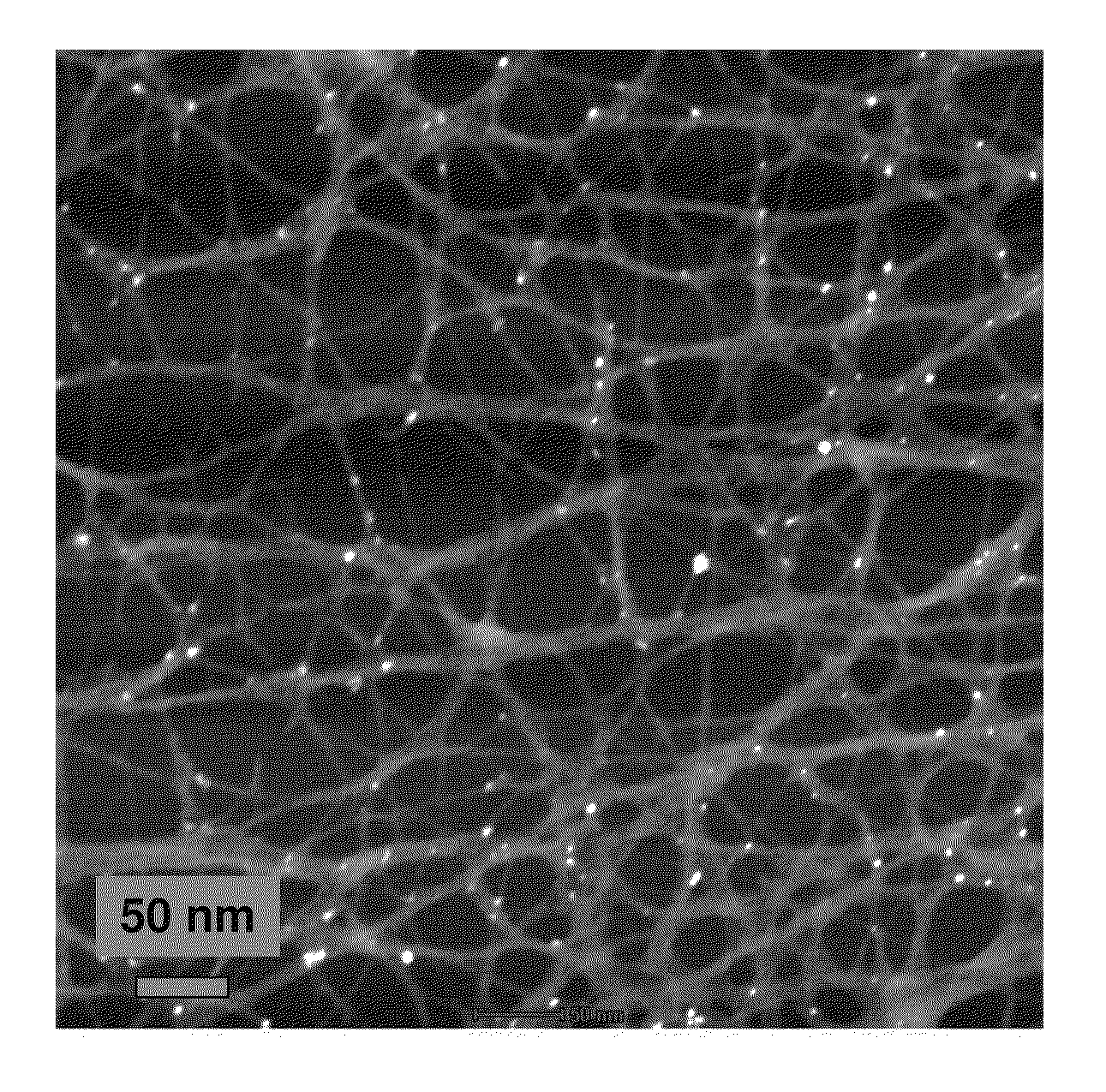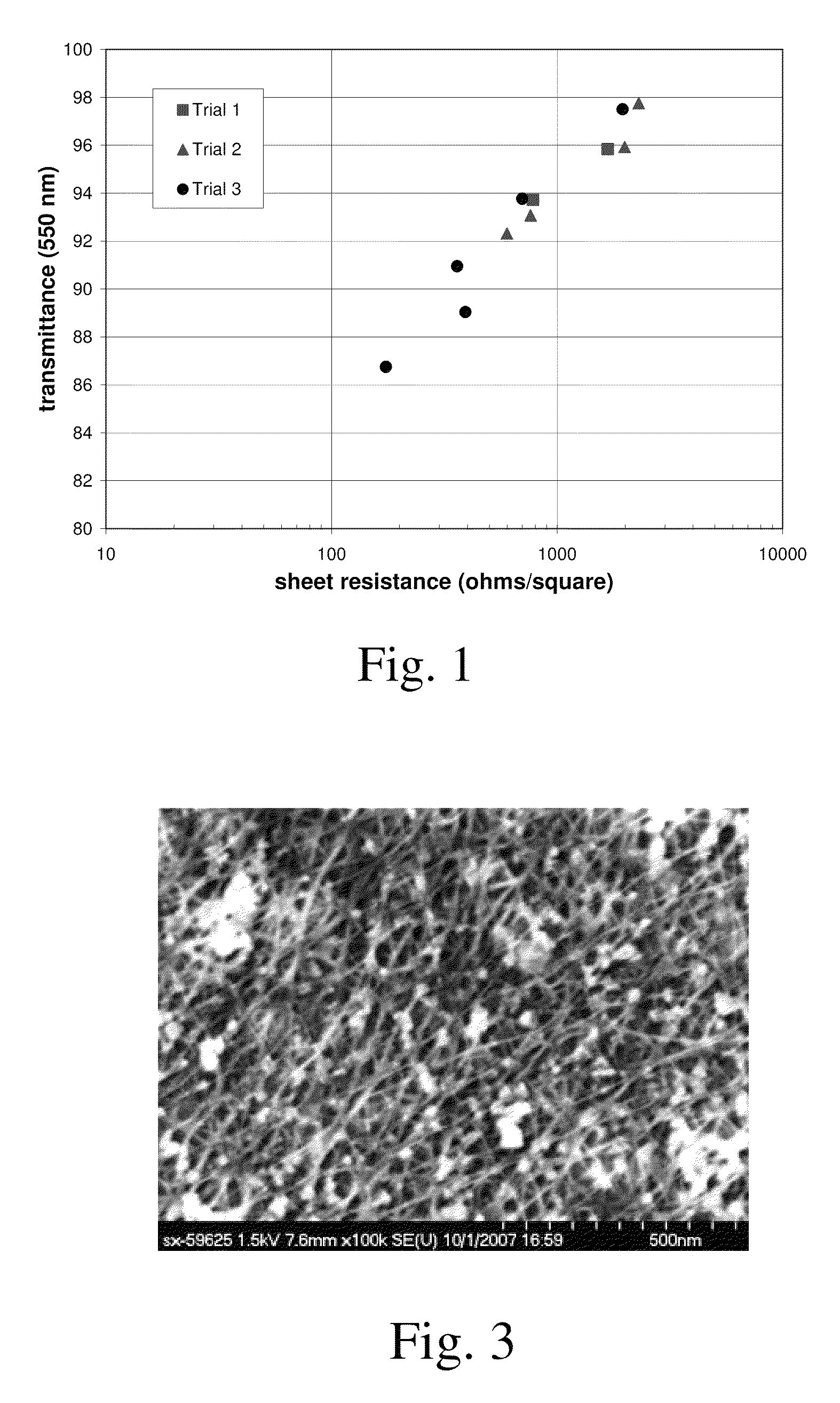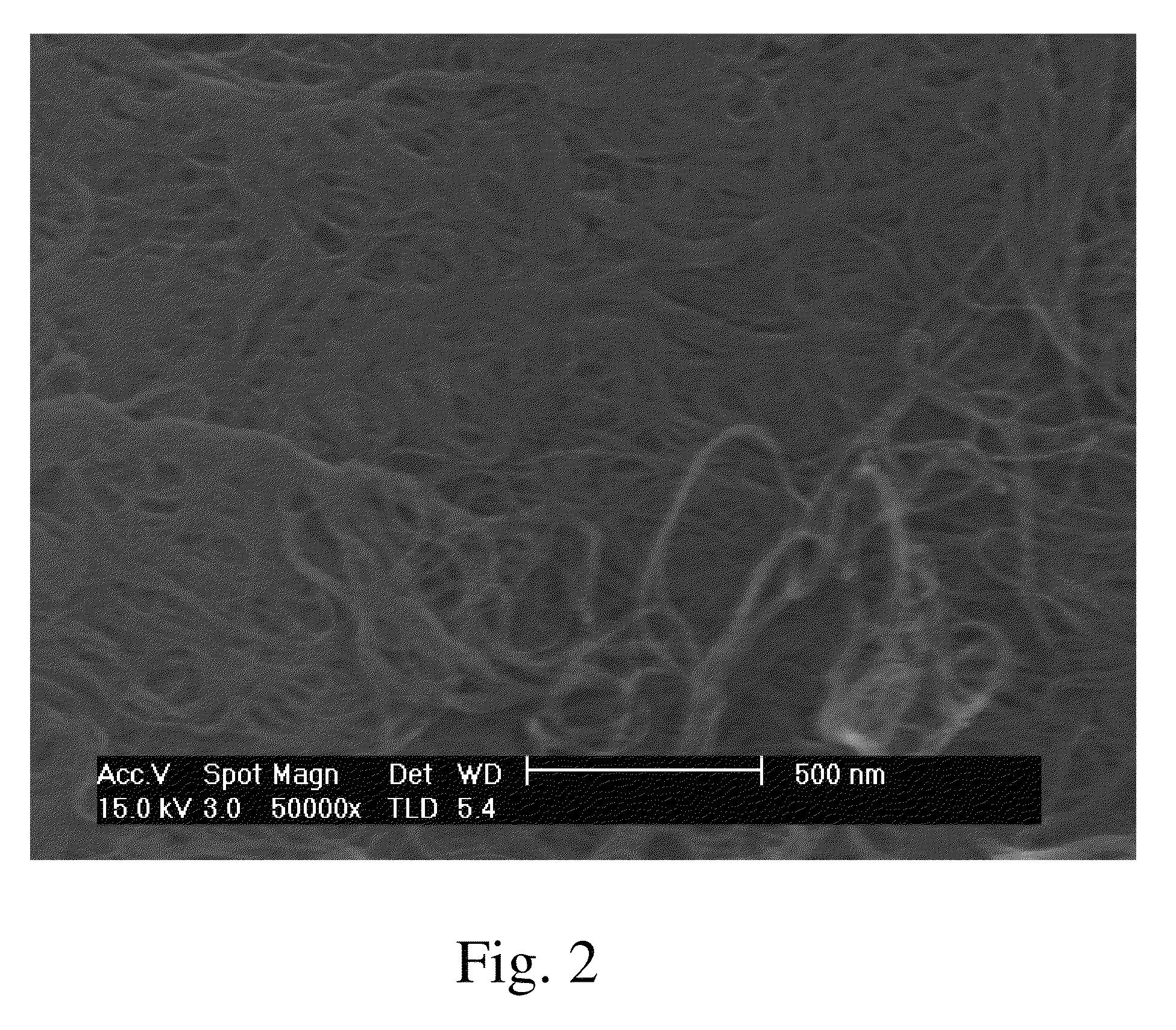Carbon nanotube films and methods of forming films of carbon nanotubes by dispersing in a superacid
a technology of carbon nanotubes and carbon nanotube films, which is applied in the direction of electrically conductive paints, transportation and packaging, and other domestic objects, can solve problems such as giving rise to repulsive interactions, and achieve the effect of improving the purity of cnt sources
- Summary
- Abstract
- Description
- Claims
- Application Information
AI Technical Summary
Benefits of technology
Problems solved by technology
Method used
Image
Examples
example 1
Formation of Cohesive, Debundled CNT Films—Method A
[0077]Purified-grade SWNTs prepared by the HiPco process (SWNT-HiPco) were obtained from Carbon Nanotechnologies, Inc. The SWNTs are reported to have an ash content less than 15 wt %. A dispersion was prepared by adding 10 mg SWNT-HiPco to 50 mL of chlorosulfonic acid and stirring (using a bar magnet over a stir plate) at room temperature for 12 hours. A known volume of the dispersion was passed through a 0.2 μm Anodisc membrane, with vacuum assistance, to create the initial CNT network of desired thickness. In some cases, the dispersion was diluted with more acid to allow preparation of very thin films. Approximately, 50 mL of diethyl ether was added as a non-solvent, while maintaining vacuum. The color of the SWNT network changed from yellow-brown to black upon washing. The film may be observed to release at the interface between the film and the Anodisc, which arises due to shrinkage caused from good non-solvent choice and the fo...
example 2
Formation of Cohesive, Debundled CNT Films—Method B
[0080]A dispersion was prepared, as described in Example 1. A known volume of the dispersion was passed through a PVDF membrane filter, with vacuum assistance, and dried by passing a stream of dry air over the membrane to create the initial film. Diethyl ether was added as a non-solvent, while maintaining vacuum. The dried SWNT network film was placed in contact with a polymeric substrate such as Mylar and transferred to the Mylar by applying pressure. Visual inspection of a film shows that the film is homogeneous.
Example 3
Formation of Cohesive, Debundled CNT Films—Method C
[0081]Direct deposition methods such as spin-coating and dip-coating may be used to prepare thin films on compatible substrates such as glass. As an example, thin films were prepared by spin coating. Purified-grade SWNTs prepared by the HiPco process (SWNT-HiPco) were obtained from Carbon Nanotechnologies, Inc. The SWNTs are reported to have an ash content less th...
example 3
Use of Different Non-Solvents
Films were prepared as in Example 1 with Method A, using different non-solvents, for diethyl ether
[0086]
SolventResultEtherExcellent filmTHFGood filmAcetoneGood filmMethanolPoor filmEthanolPoor filmIsopropanol Poor filmDiglymePoor filmChloroformPoor filmNitromethaneExcellent filmNitrobenzenePoor film
The suitability of a solvent for this invention is determined by multiple factors, including among others its interaction with the CNT, interaction with acid, rate of evaporation, and hydrophobicity.
Unique Morphology of Films of this Invention
PUM
| Property | Measurement | Unit |
|---|---|---|
| mass average length | aaaaa | aaaaa |
| mass average diameter | aaaaa | aaaaa |
| sheet resistance | aaaaa | aaaaa |
Abstract
Description
Claims
Application Information
 Login to View More
Login to View More - R&D
- Intellectual Property
- Life Sciences
- Materials
- Tech Scout
- Unparalleled Data Quality
- Higher Quality Content
- 60% Fewer Hallucinations
Browse by: Latest US Patents, China's latest patents, Technical Efficacy Thesaurus, Application Domain, Technology Topic, Popular Technical Reports.
© 2025 PatSnap. All rights reserved.Legal|Privacy policy|Modern Slavery Act Transparency Statement|Sitemap|About US| Contact US: help@patsnap.com



